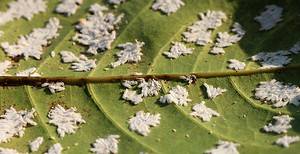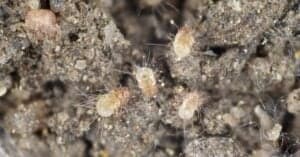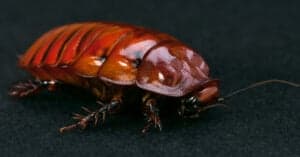“Inchworm, inchworm, measuring the marigolds. You and your arithmetic, you’ll probably go far…” (lyric by Frank Loesser, from “Hans Christian Andersen,” the musical)

Inchworm caterpillar walking on a branch.
©iStock.com/surasit bunnet
Tiny little green or yellow “worms” known as inchworms pop up all over the place in springtime and autumn. Technically, these little caterpillars cover many types of moths within the same species (Geometridae family) of thousands of varieties.
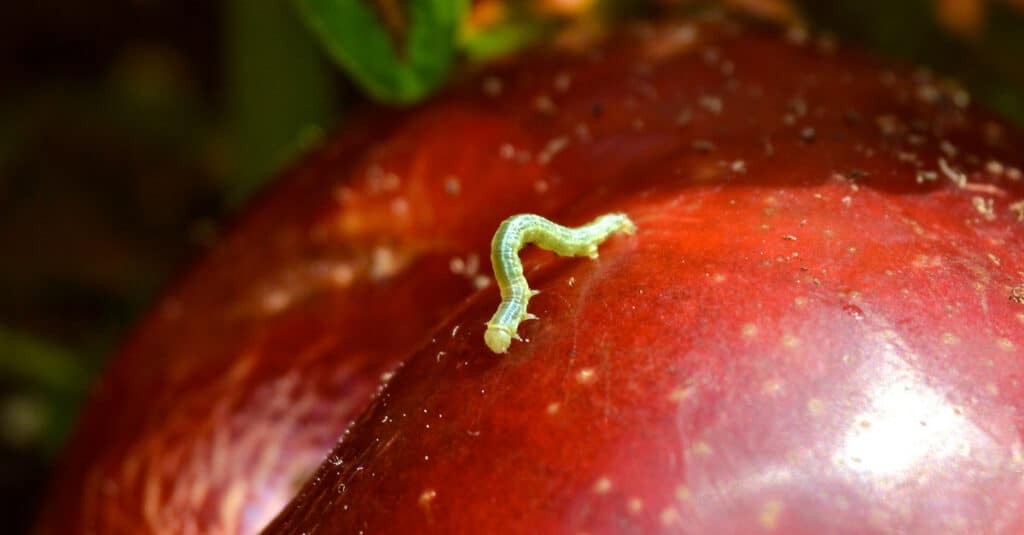
Many types of inchworms love to live in fruit trees where they have plentiful food supply.
©iStock.com/Eileen McGinley
They go by many nicknames. Cankerworms, inchworms, measuring worm, looper worm, and spanworm: they’re all the same thing. They get these various nicknames from the way they move across the surface of an apple or park bench. Striking upward or forward, they leave only a few legs on the ground, or fold themselves in half, seemingly sliding the distance to move along.
The typical lifespan of an inchworm is a year, from egg to death, though the development will vary, depending on the variety. What they become also depends on the variety; they are not all the same type of moth.
Stage One: The Egg
Like most insects, inchworms start out their lives as eggs. Typically, the eggs are laid in late summer and early autumn, beneath leaves or in tree bark or branches. The different types will choose different places to lay the eggs. Some eggs are laid singly, while others are laid in batches. All inchworms hatch in springtime, though, no matter when their eggs are laid.
Stage Two: Larvae
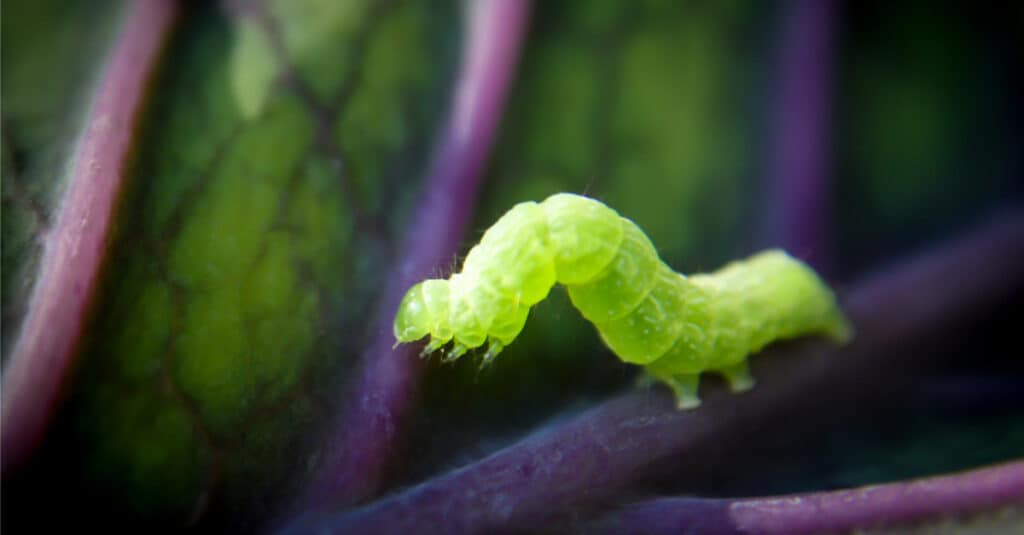
Inchworms come in many colors and types. This vivid green is most common in some areas.
©iStock.com/Tpopove
Once the egg hatches, larvae appear, looking like the inchworms we’re familiar with, complete with the unique movement patterns that earn their nickname. With two or three sets of tubelike appendages, known as prolegs, the little larvae start to scoot around in the familiar pattern. They use these appendages to reach forward, then scoots its abdomen forward to meet the prolegs.
At this stage, the larvae are eating a whole heck of lot of food, typically leaves, though they love fruit and flower buds, as well.
Stage Three: Pupae
Between two and four weeks after hatching, the little inchworms prepare themselves to become something new. This means they must form their pupae and move the process along.
Early-spring hatching inchworms will bed down in June or July, while late spring-hatching inchworms start this process in early to mid-autumn. When it’s time, the inchworm will produce silk threads to lower themselves to the ground. They will burrow into the leaf litter or dirt, or, depending on the variety, spin a protective cocoon and nestle inside. This is when they pupate, or become pupae.
Stage Four: Emergence
If the inchworm was a spring baby, they will emerge, most often, before winter. Summer-hatchers usually spend the winter in the ground and emerge as adults in springtime.
At this stage, they become what they are meant to be: moths.
Female Inchworms: Wingless Moths
Inchworms of the female persuasion emerge not as winged moths that flutter off to find food. Instead, they emerge as wingless moths and wait to be found by mates in whatever tree she has climbed.
Male Inchworms: Muted Moths
When males emerge from their pupate state, they quickly expand wings that allow them fly away and seek their mates, shelter, food, and other necessities.
When the moths meet, they mate and the cycle starts all over again, as the female lays her eggs in her tree and life moves forward.
What the Inchworms and Moths Look Like
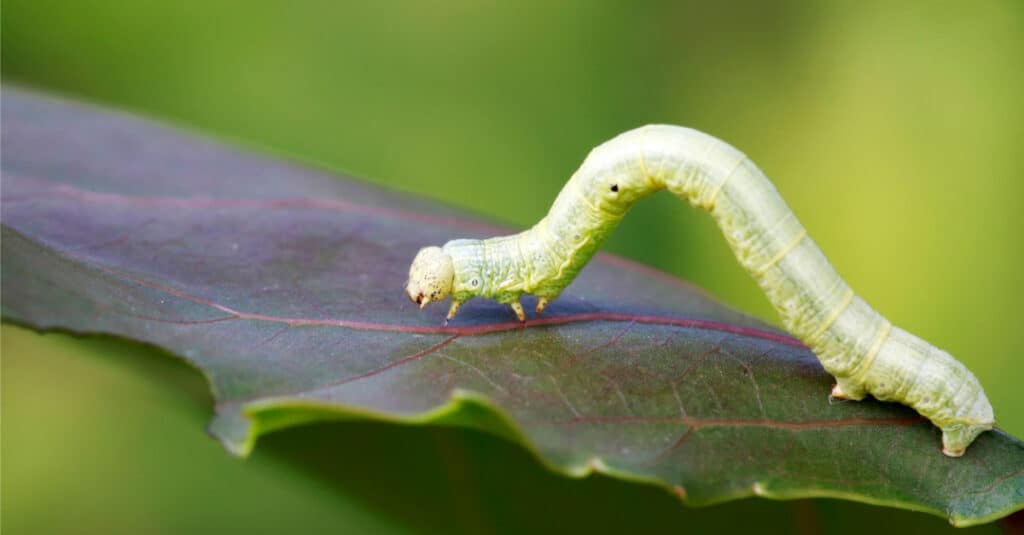
They are intriguing little creatures!
©iStock.com/lnzyx
Once the inchworms have pupated and emerged as moths, they will look different from each other, depending on their variety.
Autumn worms are usually brown with green backs and white stripes running the length of the back. With three prologs, these worms are distinctive from spring worms with only two prolegs. Spring inchworms usually run in the green to reddish-brown vein, with yellow stripes along their sides. These inchworms tend to live in and around shady fruit trees, as well as maples, elms, and oaks.
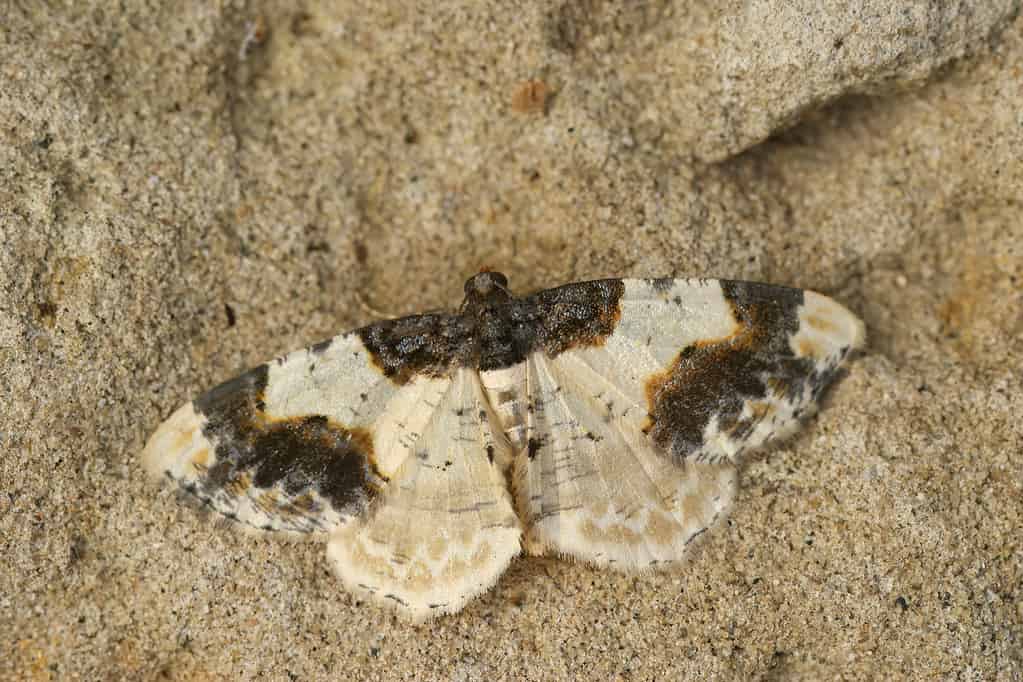
Detailed closeup on a colorful the scorched carpet geometer moth,
Ligdia adustata, with spread wings on wood
©iStock.com/Wirestock
The moths have thin bodies and a wide wing spread, usually held flat out to the sides. They come in many colors, shapes, and sizes, though, as they are part of a huge family of moths. Camouflage patterns are frequently seen, as well as scalloped wing edges and pointed forewings. The males usually have feathery antennae, while females bear thin filaments. Colors range from green to brown, white to gray, gray-brown, or mint green. They may even come in more vibrant colors with oranges and reds and yellows mixed into the muted colors.
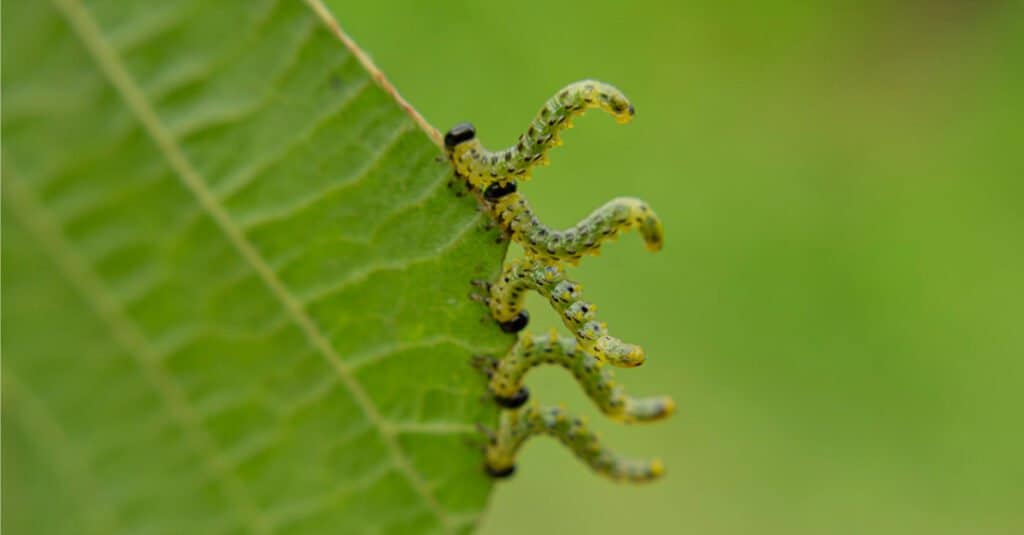
Many inchworms will emerge at once.
©iStock.com/DmitriiDivanov
The photo featured at the top of this post is © iStock.com/surasit bunnet
Thank you for reading! Have some feedback for us? Contact the AZ Animals editorial team.




